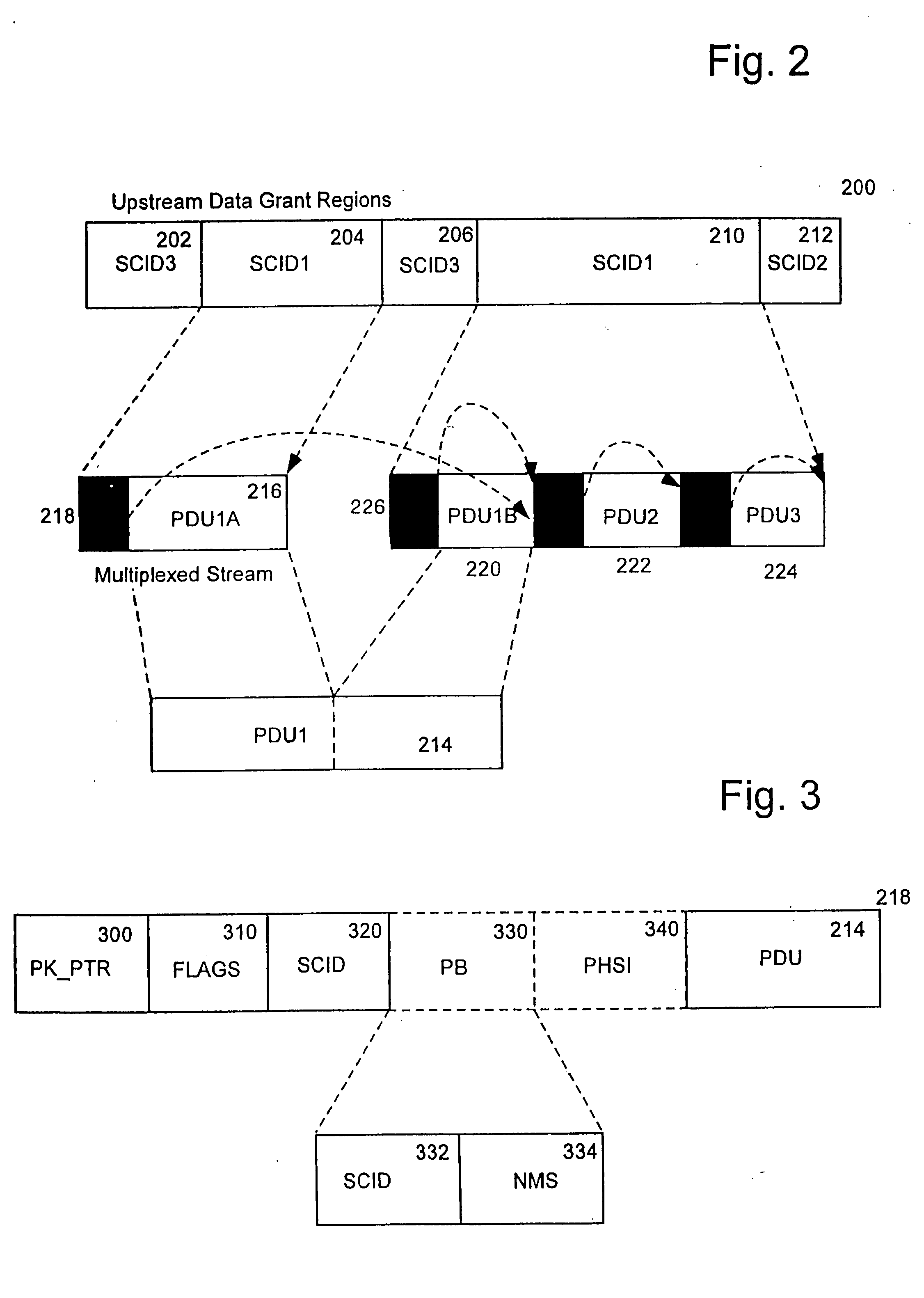Allocation of packets in a wireless communication system
a wireless communication and packet allocation technology, applied in the field of wireless communication systems, can solve the problems of inefficient current methods of mixing voice and data, voice traffic may still suffer under heavy data loading, and transmit information
- Summary
- Abstract
- Description
- Claims
- Application Information
AI Technical Summary
Benefits of technology
Problems solved by technology
Method used
Image
Examples
Embodiment Construction
[0020] Multimedia networks may carry a combination of voice packets and data packets. Typically, such multimedia networks treat a voice packet as they would a data packet; formatting and transmission for both are handled equivalently, and may share the same bandwidth. For example, both the Asynchronous Transfer Mode (ATM) approach and internet protocol (IP) approach handle voice packets in this manner. However, an ATM approach requires reserving network bandwidth for voice packets. Further, bandwidth management is typically allocated on a call-by-call basis. ATM-style voice packet management also requires implementing segmentation and reassembly (SAR) of all data. Network communication of this sort typically takes place between a client computer or modem and a central controller. The client transmits a bandwidth request to the central controller, which in turn allocates bandwidth on the network as necessary and instructs the client when bandwidth is allocated and available. Thus, an...
PUM
 Login to View More
Login to View More Abstract
Description
Claims
Application Information
 Login to View More
Login to View More - R&D
- Intellectual Property
- Life Sciences
- Materials
- Tech Scout
- Unparalleled Data Quality
- Higher Quality Content
- 60% Fewer Hallucinations
Browse by: Latest US Patents, China's latest patents, Technical Efficacy Thesaurus, Application Domain, Technology Topic, Popular Technical Reports.
© 2025 PatSnap. All rights reserved.Legal|Privacy policy|Modern Slavery Act Transparency Statement|Sitemap|About US| Contact US: help@patsnap.com



